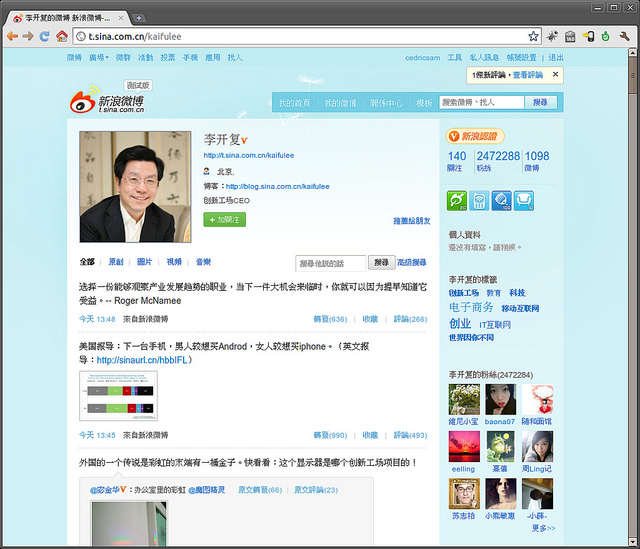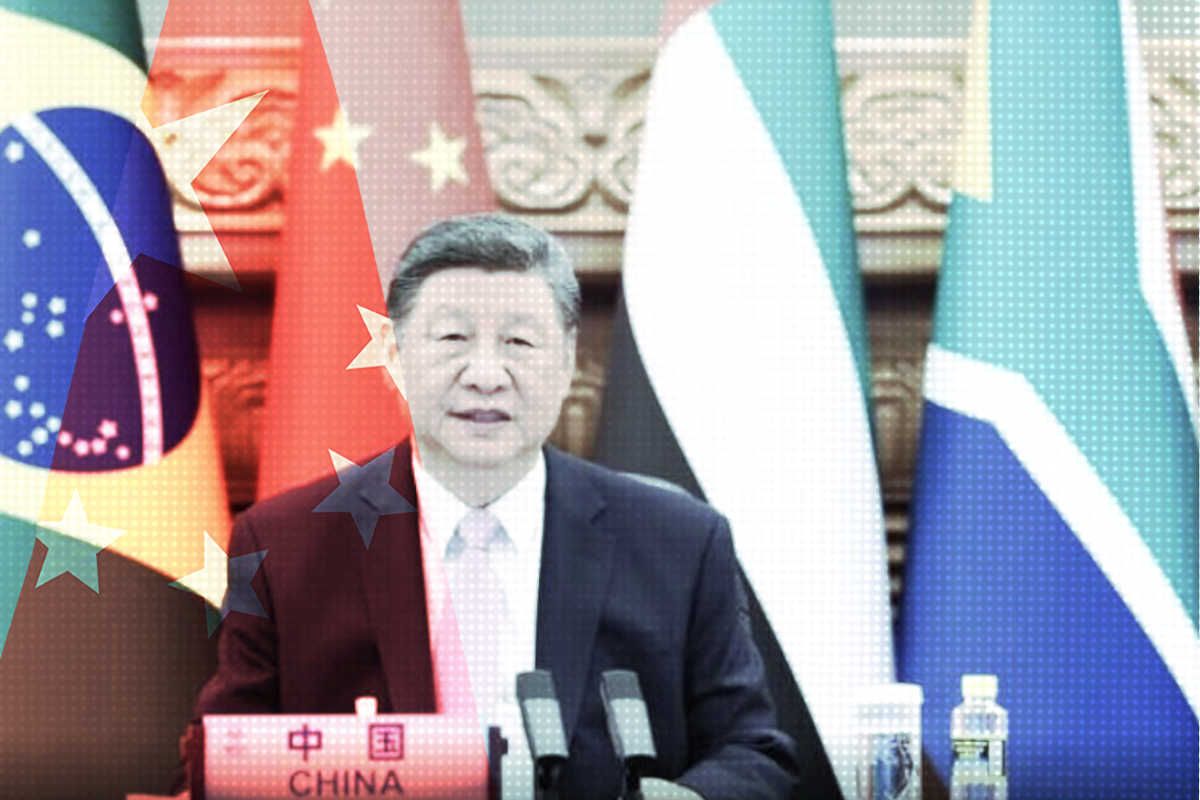When talking about domestic microblogs in China, we tend to broad-brush these services as “Twitter clones” or “Twitter-like,” in deference to the service that popularized microblogging worldwide. But in fact, domestic Chinese services such as Sina Weibo have already distinguished themselves in interesting ways.

Launched in July 2006, Twitter is an online social network that popularized the concept of the “microblog,” a broadcast medium consisting of sentence-length messages, images or embedded video. The founders of Twitter opted to limit the length of microblogs on their service to a concise 140 characters (or units of information), a practical decision allowing users to conveniently update their Twitter accounts from a mobile phone using short message service (SMS), which has traditionally allowed 140 characters.
In the midst of the July 2009 unrest in China’s northwestern region of Xinjiang, China’s government blocked access to Twitter, making the service unavailable to the vast majority of users (those, that is, who aren’t familiar with tunneling software to get around the technical censorship system, or Great Firewall). Despite controls, Twitter is still used in China, and remains popular among a certain subset of Chinese academics, journalists, artists and so-called dissidents, who use the service to chatter quite openly about issues of mutual interest and concern.
Over the past year or more, a number of indigenous microblog services from Chinese Internet giants have sprung up to fill the void left behind as Twitter and Fanfou — an early domestic microblog service — were blocked post-Xinjiang.
Chinese Internet giants Sina and Tencent (QQ) were the first to step into the void left by Twitter and Fanfou, offering microblog services to millions of users in mainland China. The pace of development of these services has been staggering. By November 2010, Sina Weibo — weibo (微博) is the Chinese term for “microblog” — had already signed up more than 40 million users for its service.
Sina Weibo focused its strategy on becoming a text-based broadcast entertainment medium, offering exclusive content from celebrity microbloggers across China.

Figure 1. Former Google China chief and Internet entrepreneur Kai-fu Lee is one of the ten most popular “Weiboers” in mainland China with 2,624,200 followers in December 2010.
As I suggested earlier, the reference to Twitter in talking about homegrown Chinese microblogging services can be simplistic, if not sometimes outright unfair. At the same time, however, the reference is often inescapable. We routinely use the term “tweet” to refer in English to that most fundamental, or “atomic”, unit of the microblog — the individual, indivisible microblog entry.
The “tweet,” as we call it, can generally perform one of three functions. It may be 1) an ordinary message (tweet), 2) a repetition of another user’s tweet (a retweet), or 3) a reply to another user’s tweet.
So how have Chinese microblog services like Sina differentiated themselves with their use of the individual tweet?
First of all, instead of using “RT” to signal a retweet, the Sina Weibo user writes “//”, followed with the retweeted user’s name. Behind these apparent trivialities, the structure of the group conversation is in fact dramatically different in practice between Twitter and Sina Weibo.
Users of the American microblogging service often deviate from the adopted syntax (by using “via @somebody”) or employ Twitter clients, such as TweetDeck and HootSuite, that may not appropriately mark an entry as a retweet. By contrast, Sina Weibo makes a good case for preserving original postings.
On Sina Weibo’s official interfaces (both Web and mobile), the equivalent of a Twitter retweet is indicated instead with two amalgamated entries: the original entry and the current user’s actual entry — which is a commentary on the original entry — often with a record also of his sources (if the original entry was obtained, for example) from an intermediary.
Not following? The difference is best illustrated with an example. Take the following figure.

Figure 2. Amalgamated entries on Sina Weibo.
This is a status update made by Taiwanese celebrity user Dees Hsu and shown on her user timeline. In this example from Sina Weibo, the user quotes a entry by singer A-Mei Chang (note 1) who herself retweeted an entry originally written by celebrity Liu Hanya (note 2). The two are distinct Weibo entries, displayed as an amalgamated entry on Dees Hsu’s user timeline, along with comments and the number of reposts (note 3).
The subtlety of this conversation might actually be lost on Twitter, where the different parts have to be retrieved over several user timelines.
In a further distinction from its American forebear, the Sina service borrows from its experience as one of China’s biggest blogging service providers and introduces a crucial function entirely absent from Twitter — the comment.
Conversation on Twitter is achieved with combinations of hashtags and search, or with successive replies. On Sina Weibo, these functions are also present, but comments contribute an additional layer of familiarity and structure to the microblog conversation.
Putting a user entry side by side with the original entry also has the effect of centralizing conversation on one original entry. With Sina’s focus on celebrity users, the timelines of these VIP users often resemble a television game show with an added dimension of interactivity. Acquainted celebrities talk with one another directly. The masses, meanwhile, respond in the comments section and repost the conversation to their networks.
Pictures posted on Weibo are also directly hosted by Sina and directly linked as a property of a given entry — rather, that is, than eating up valuable space in the text field.
Aside from these differences in function, fundamental differences in language contribute further richness to the world of the Chinese microblog. While a single English word can consume a whole string of characters, a single Chinese character is far more condensed, conveying an entire word or concept in a single computing ‘character.’ Consider, for example, the richness of a typical four-character Chinese idiom such as ba miao zhu zhang (拔苗助长), or “trying to help the shoots grow by yanking them upward,” which means to ruin something through overbearing enthusiasm. That’s a precious four characters in Chinese, but a verbose 53 in English.
Given these advantages in terms of both language and function, it’s perhaps no surprise that microblogs are transforming the landscape of information consumption and diffusion in China, having a dramatic influence in shaping news stories like the recent Yihuang (宜黄) self-immolation case.
Cedric Sam is a technical researcher in digital media at the Journalism and Media Studies Centre at the University of Hong Kong. He is also pursuing a graduate degree in interaction design from Hong Kong Polytechnic University’s School of Design. You can follow him on his research blog, The Rice Cooker.




















